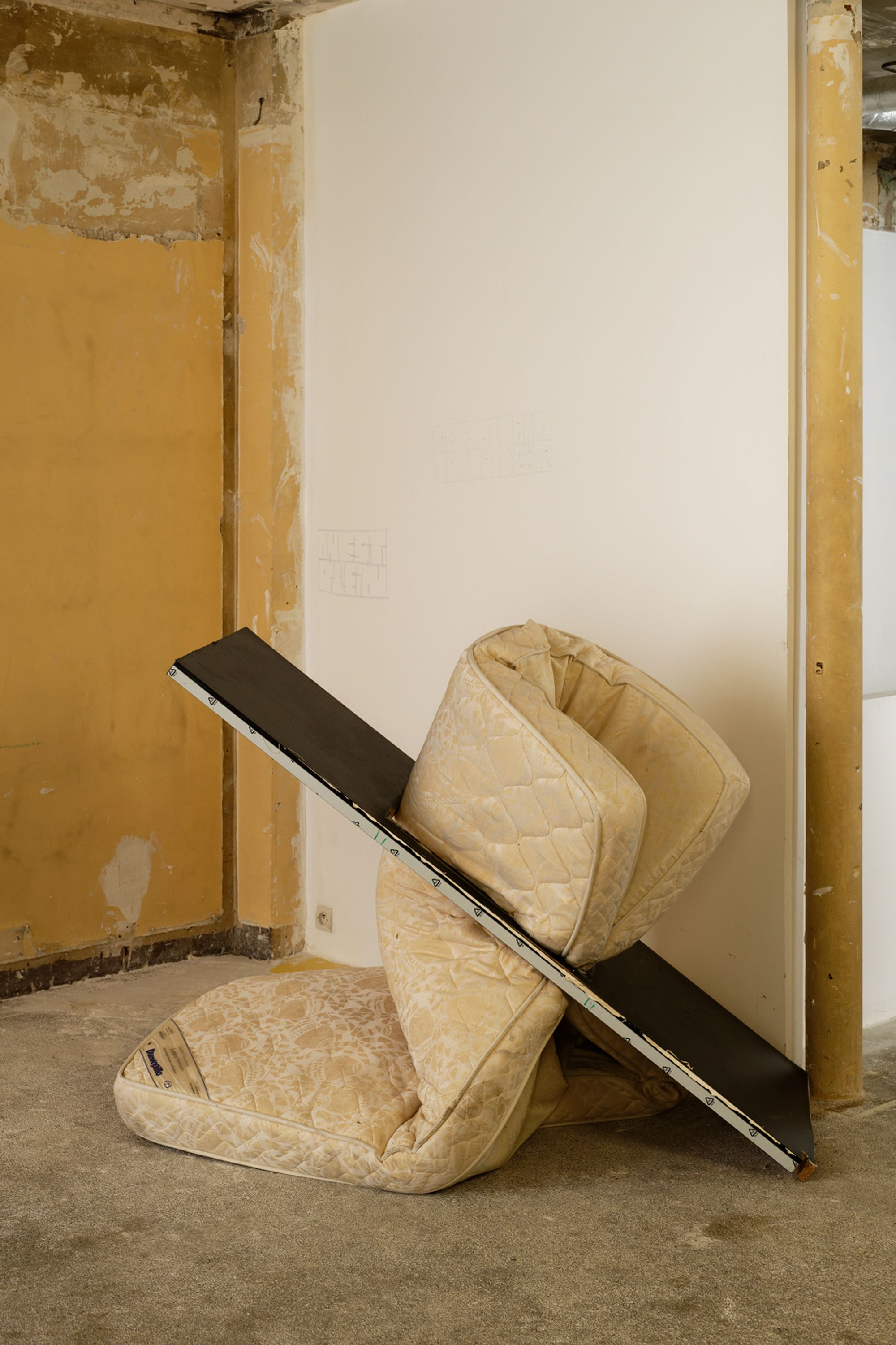
Ser Serpas, conjoining fabricated excesses literal end to a mean, 2021; Found objects, 117 × 165 × 96 cm, installation view, rue des Gravilliers. Photography by Aurélien Mole. Courtesy the artist and Balice Hertling, Paris.
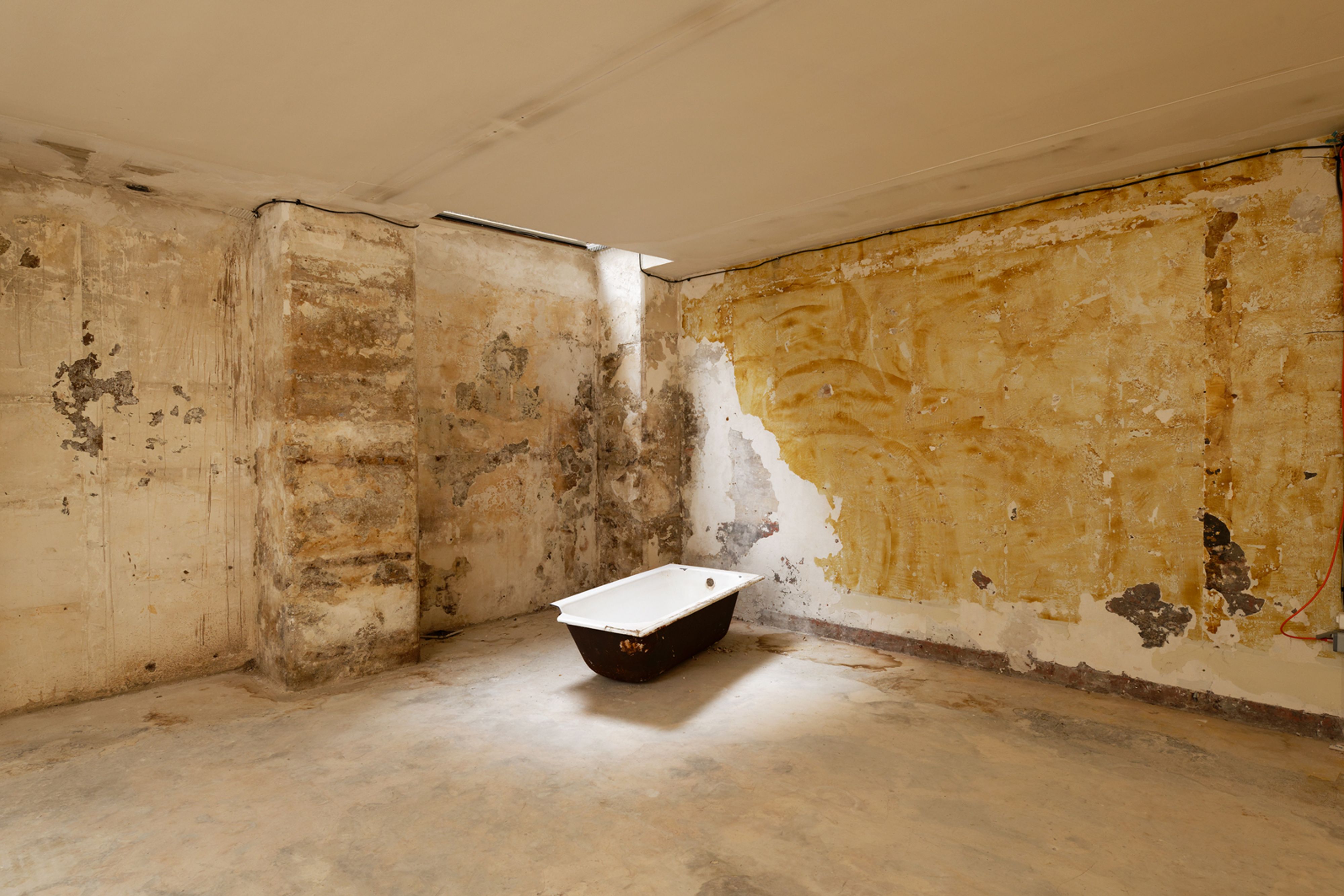
Ser Serpas, 2021; Found objects, installation view, rue des Gravilliers. Photography by Aurélien Mole. Courtesy the artist and Balice Hertling, Paris.
The artist Ser Serpas works in many media: with textiles culled from fashion friends, with figurative painting, and, most conspicuously, with found objects — or, put more bluntly, trash. With a formalist eye, the 27-year-old L.A.-native takes detritus like old furniture, broken appliances, and cast-away architectural elements and composes tense chimerical arrangements with them. Working mostly out of Tbilisi, the capital of Georgia where she’s currently based, Serpas’s practice appropriates and sheds discursive frames, whether it’s the “woke” language that’s become art-world convention or the visual vernacular of sci-fi films. In a 2020 Zürich exhibit for Karma International, blood splatters referenced haunted-house labyrinths, while in the same city her 2018 Luma Westbau show displayed garbage compositions on large plinths, a display that resembled the loot-packed “regional” sculpture sections of traditional museums like the Met. Her show last fall at Balice Hertling in Paris saw her tossing discarded street-sign poles down the gallery stairs as part of an “action piece.” Here she discusses her mode of reimagining, “fucking up,” and even “decorating” the spaces she finds herself called to work with.
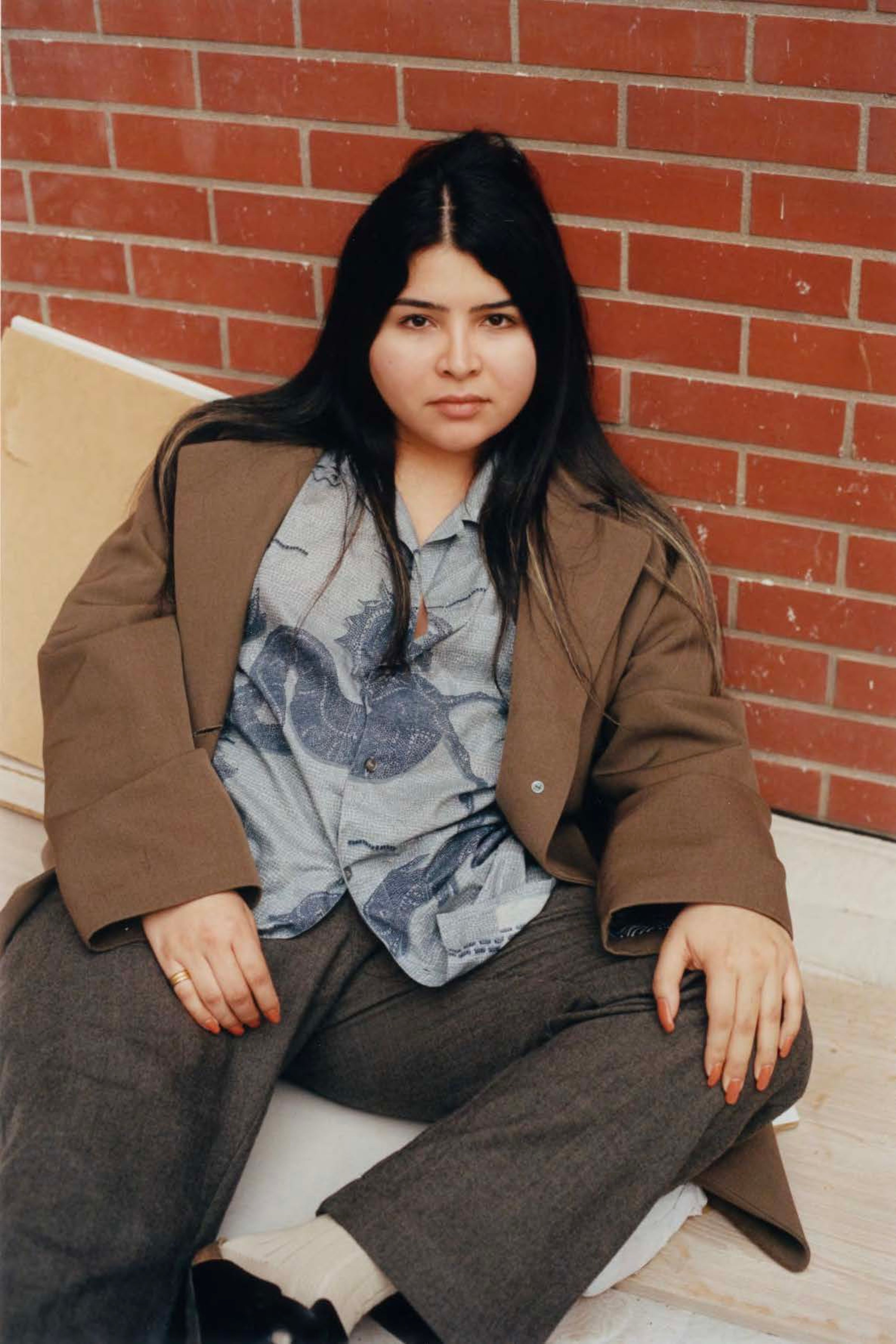
The artist Ser Serpas photographed in Paris by Rafik Greiss for PIN–UP
Drew Zeiba: I’m curious how you work with space and with the materials you choose. How do your materials relate to where you are in the world
Ser Serpas: The palette is always informed by the architecture of the city. I usually say to the curators, “It’s your city, do you know where people dump stuff?” I don’t go to an actual dump, but to places where people discard specific things. When I was working on a show in Paris, I found most of the waste I used in the posher areas, like the 16th arrondissement. All of the objects were either white, gray, or black design stuff — parts of doors and parts of stairways. A good location is under bridges, which is a kind of hidden place where people feel comfortable dumping things. In Tbilisi, I found an area with discarded car parts. It was an empty lot off the side of the highway near an auto shop, and it could really only exist in that zone of the city because of its layout. A lot of cars here in Georgia are super patchwork — they look like something out of Star Wars. Then, when I bring the objects into a space, the intention is usually to fuck it up.

Ser Serpas, conjoining fabricated excesses literal end to a mean, 2021; Found objects, 117 × 165 × 96 cm, installation view, rue des Gravilliers. Photography by Aurélien Mole. Courtesy the artist and Balice Hertling, Paris.
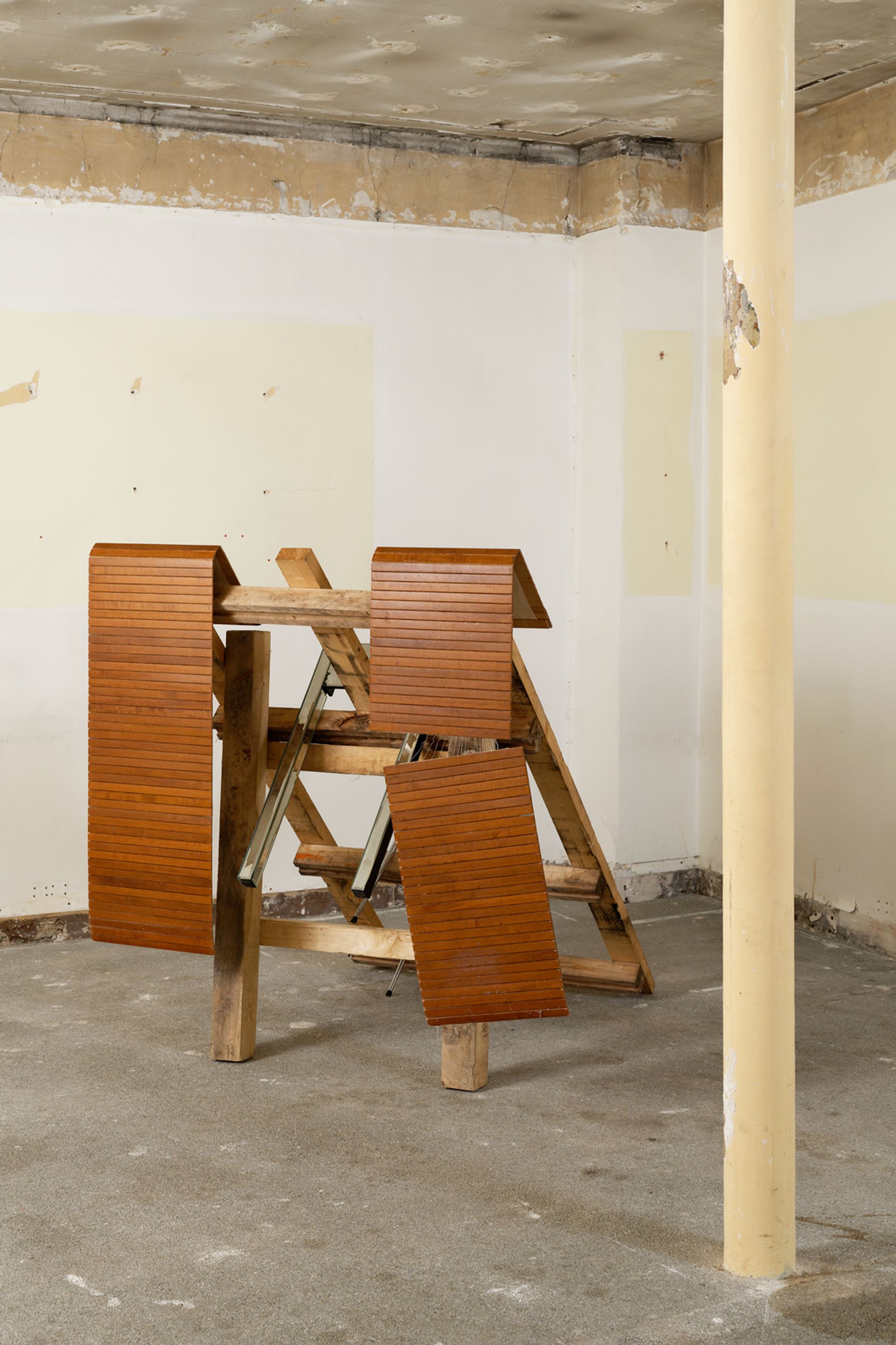
Ser Serpas, 2021; Found objects, installation view, rue des Gravilliers. Photography by Aurélien Mole. Courtesy the artist and Balice Hertling, Paris.
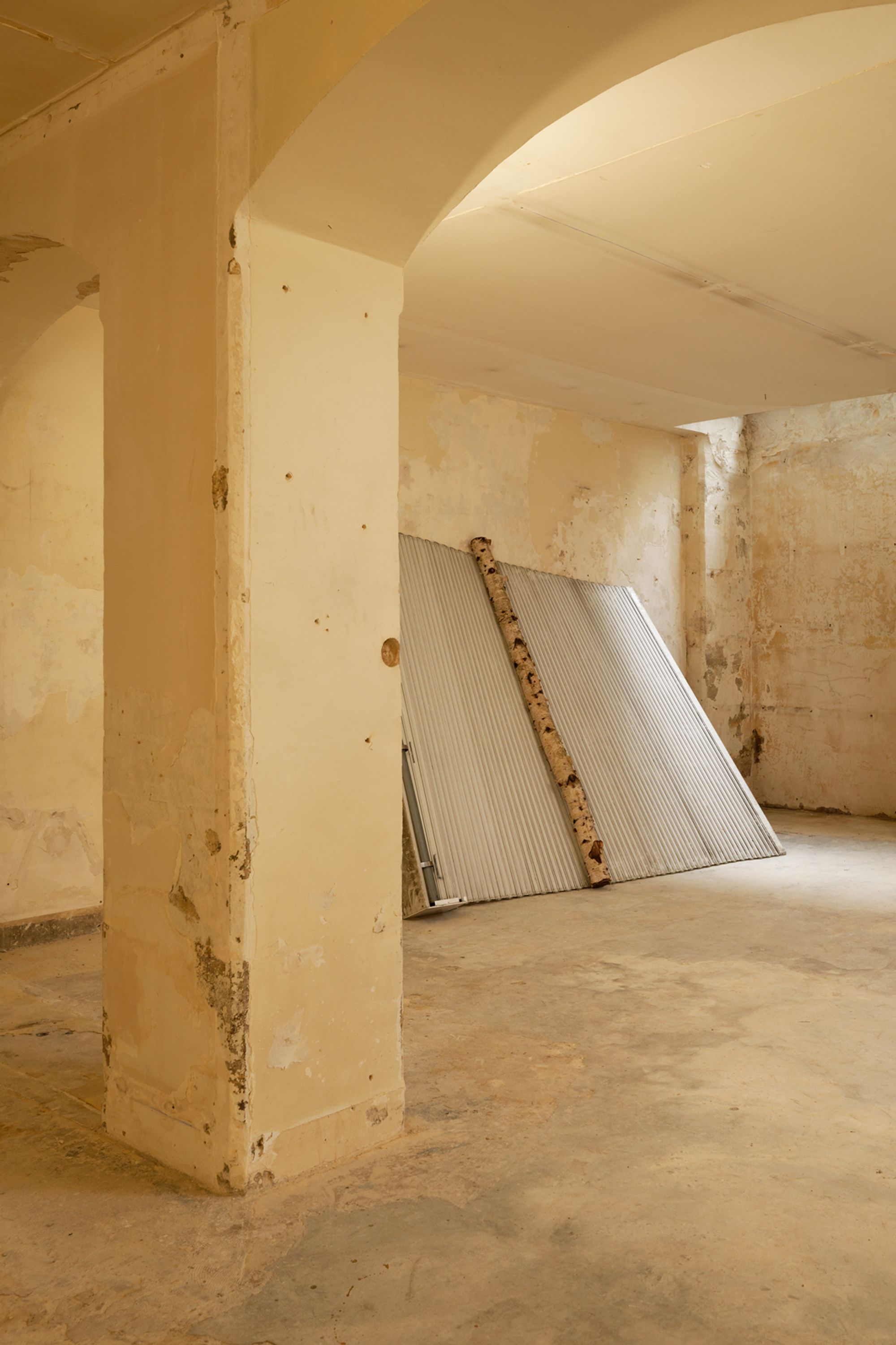
Ser Serpas, nights of the soul thorough body, 2021; Found objects, 117 × 165 × 96 cm, installation view, rue des Gravilliers. Photography by Aurélien Mole. Courtesy the artist and Balice Hertling, Paris.
DZ: Your work is often talked about in terms of the “readymade,” which brings up the idea of selection and the production of value in an artist’s choice and in the art market. In your work, what is the relationship between control, choice, and chance?
SS: My work is making objects out of garbage, and I’m putting this garbage into white boxes, where the only thing holding them together is gravity. I’m always trying to capture the moment before these objects collapse. That’s why none of my stuff has ever been welded. Nothing is attached to anything. I’m always looking for objects with orifices that can be combined with other things so that they hold each other up, because most of my work is about finding the point of tension. I balance things in the nooks and crannies of other constituent objects, so if you push a little bit, it will fall.
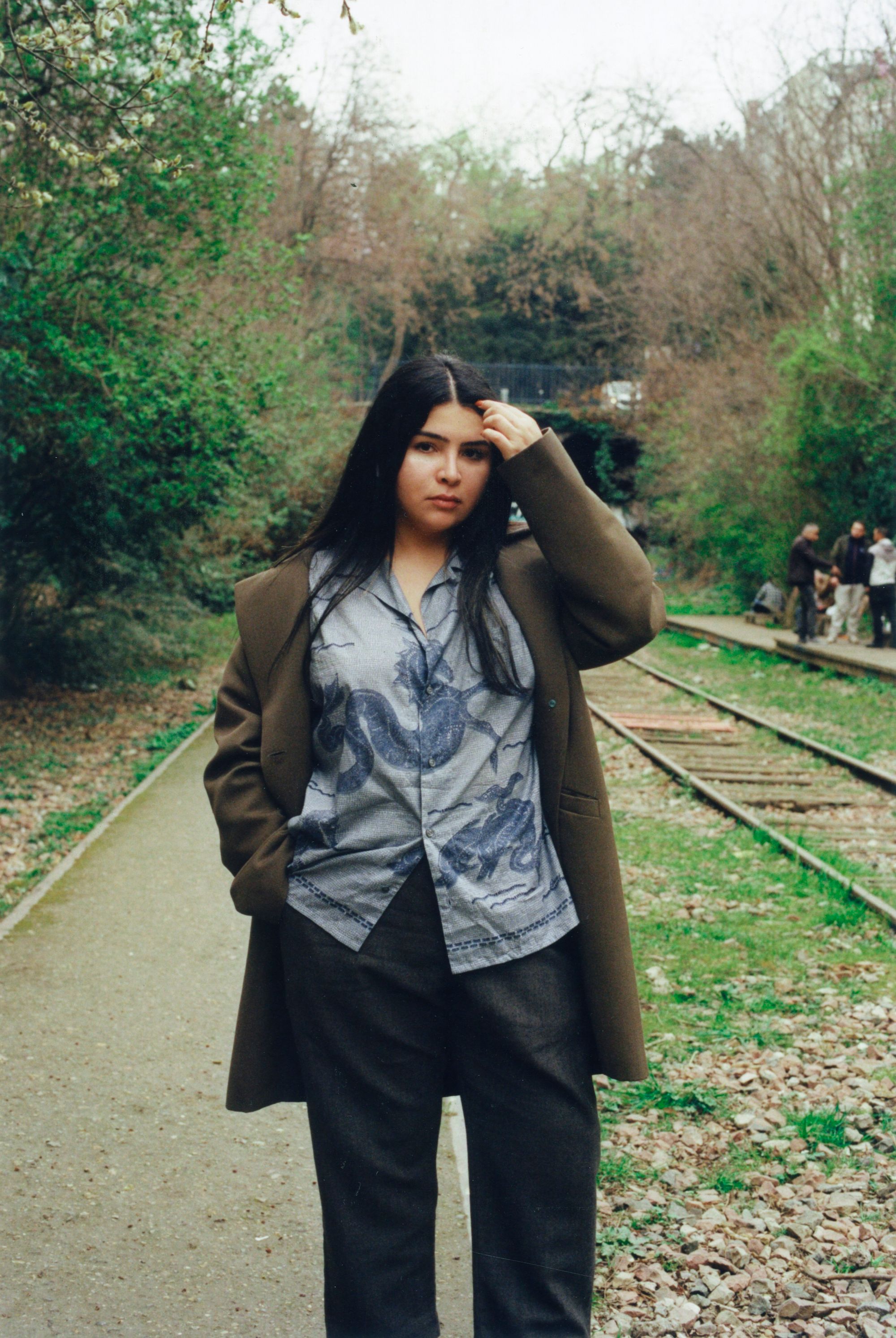
The artist Ser Serpas photographed in Paris by Rafik Greiss for PIN–UP
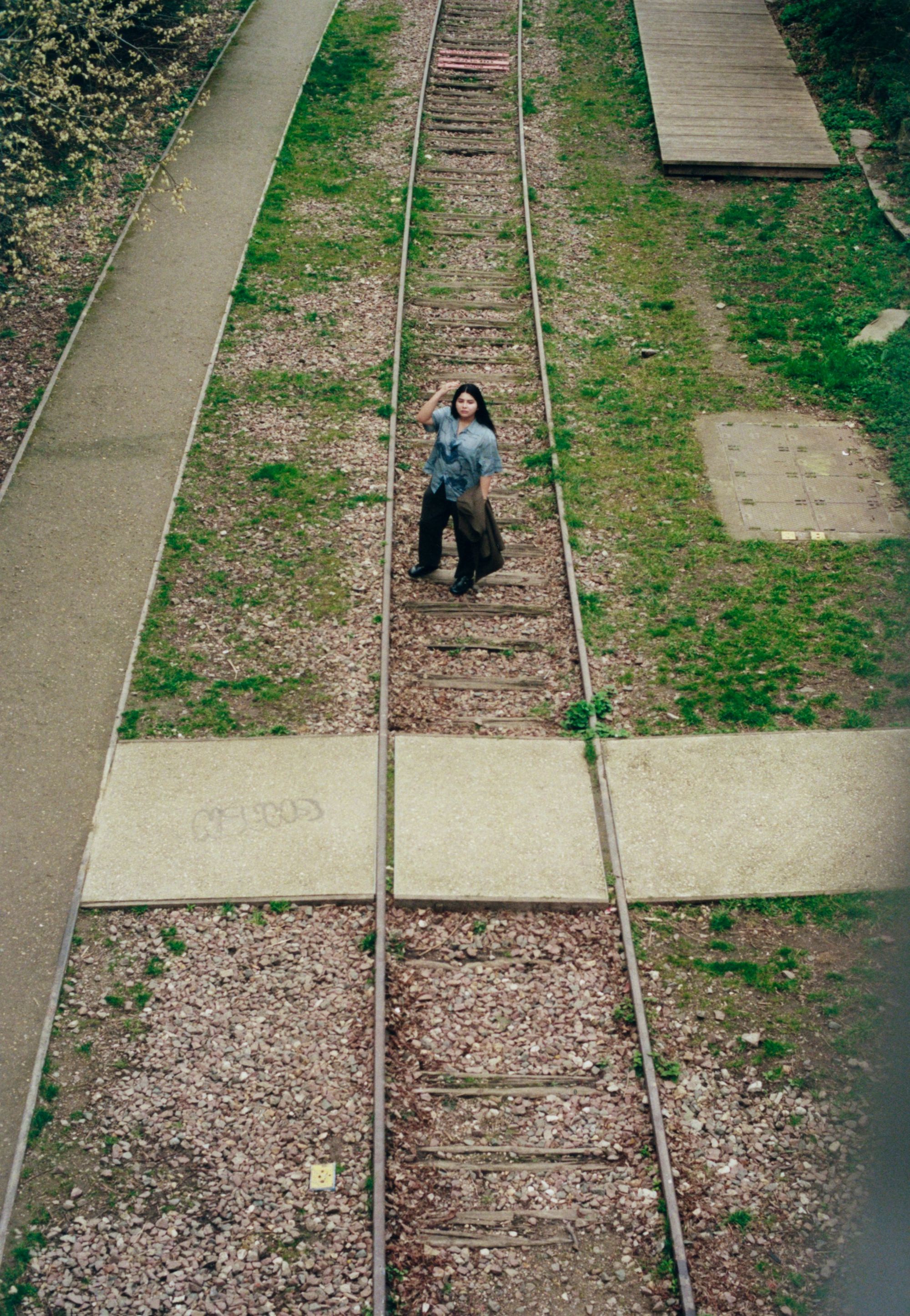
The artist Ser Serpas photographed in Paris by Rafik Greiss for PIN–UP
DZ: Do you have a sense of how you’re going to install objects ahead of time or do you figure it out as you’re installing?
SS: I don’t have any idea how I’m going to put them together until I’m in the space. It’s very important for me to see every object in the room, and then I make connections in the space. For the Paris show, for example, I put everything on the walls, along the side, kind of like a palette, except for these two street poles — they were so domineering, completely steel and concrete. So I threw them both down the gallery stairwell and it totally destroyed the stairs. The piece feels resolved once it’s complicated enough for me. Once that’s done, I’m not that attached. And I never feel precious about the individual components. I’ve never had anything fabricated, so I feel like it lets me be more rough with the material, and more aggressive with the potential audience. Sometimes people say it seems like kind of a violent practice. But to me, it’s more like cardio: music, a lot of caffeine, being alone in the room and treating it like my own little club where I’m just kind of vibing.
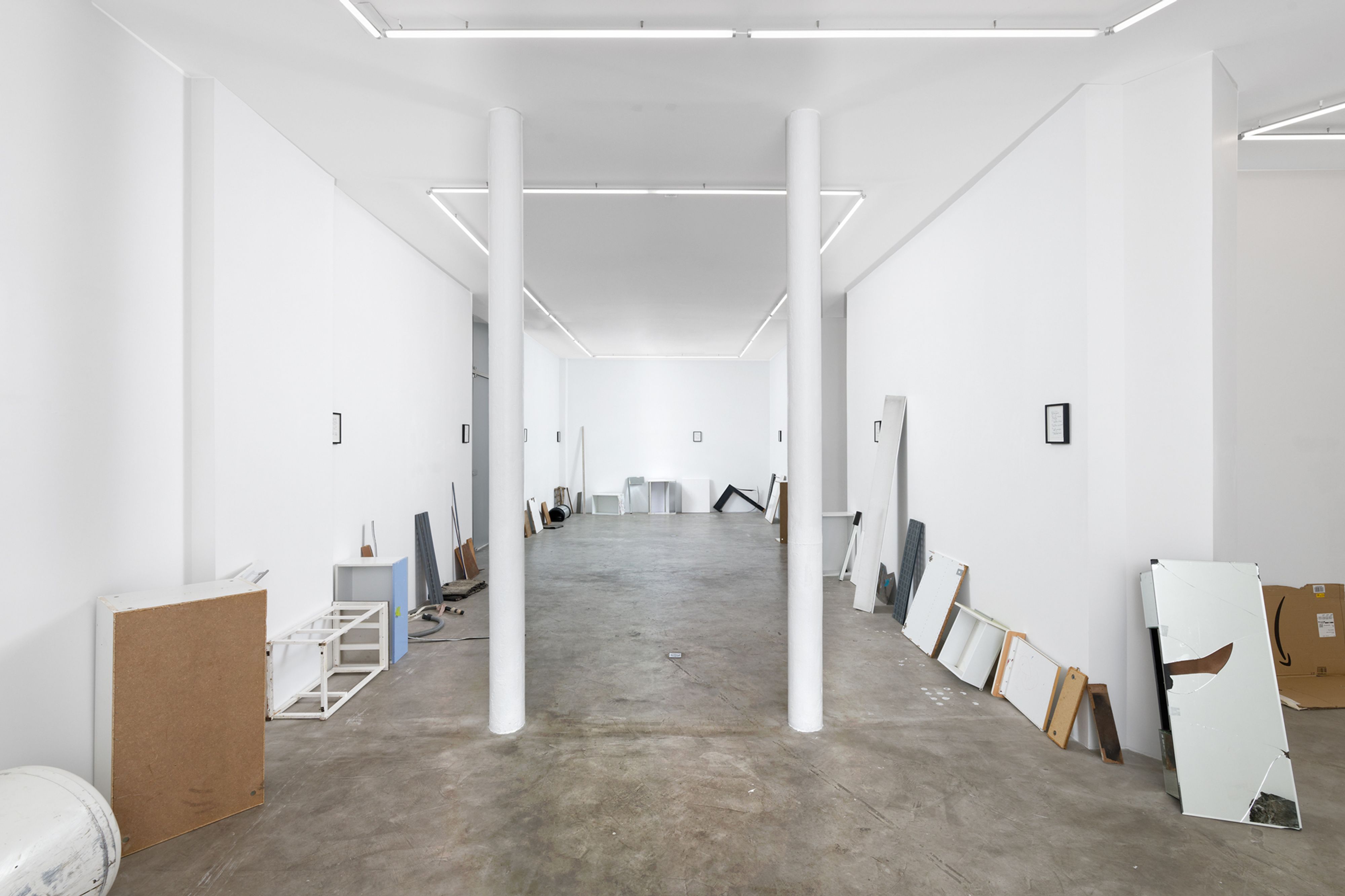
Ser Serpas’ im not good at anything including this round the this time, 87 unused collected objects from the installation at 84 Rue des Gravilliers and 15 framed pages of notes from Georgian language classes that the artist did not follow up on after the 8th lesson, 2021. Found objects and framed poems, installation view at Rue Saint-Martin. Photography by Aurélien Mole. Courtesy the artist and Balice Hertling, Paris.
DZ: At the Hammer Museum, for Made in L.A. 2020, you presented everything in a kind of grid. In the Luma Westbau show in Zürich, everything was placed on plinths. And the Paris show felt less precious, with things being tossed through or placed in holes. How do you decide on these different forms of display?
SS: Half of the show is location and orientation. I think the most ideal situation for me and for a lot of artists I know is just having a space that looks sick. I think of myself more as an interior decorator than an artist. [Laughs.] I know how to position things so they look good. I used to take photos for Instagram of all my work, and I knew the work was done once it looked good on my iPhone camera.
DZ: How do you think about documentation?
SS: The documentation of the show is how the work lives on. I’ve lost 90 percent of the sculptures I’ve made, besides the more recent ones, because nobody was buying them, and what am I going to do, store all this garbage? The documentation is essentially the art. In years and years, if I ever have a museum retrospective thing, there’s not going to be a lot of work to show besides the documentation.
DZ: That’s also what is communicated by a storefront-style staging in L.A., or at the Luma Westbau show, where you had textiles wrapped around the building. Is there an impulse there to modify or relate to the exterior of the art space?
SS: Absolutely. Some shows are only as good as what you get at first glance.

Ser Serpas’ im not good at anything including this round the this time, 87 unused collected objects from the installation at 84 Rue des Gravilliers and 15 framed pages of notes from Georgian language classes that the artist did not follow up on after the 8th lesson, 2021. Photography by Aurélien Mole. Courtesy the artist and Balice Hertling, Paris.

Ser Serpas’ im not good at anything including this round the this time, 87 unused collected objects from the installation at 84 Rue des Gravilliers and 15 framed pages of notes from Georgian language classes that the artist did not follow up on after the 8th lesson, 2021. Photography by Aurélien Mole. Courtesy the artist and Balice Hertling, Paris.